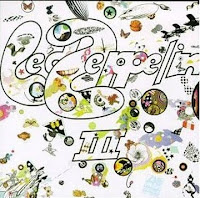The mass media is fond of “sound bites,” utterances that, putatively, compress a great deal of information within a few words or a short phrase. The sound bite is a wonderful example of the way technology impacts the form messages take, in the same way, for instance, that cell phone texting has led to verbal constructions such as “THX” (thanks), “OMG!” (Oh My God!), “TBH” (To Be Honest), “L8R” (later), and so on. In the early days of internet discussion boards, there arose a phenomenon referred to as “flame wars” (another sound bite), the mutual misunderstanding of a series of messages that eventually culminated in vicious ad hominem attacks and name-calling. The so-called “flame war” is yet another consequence of technology impacting communication: e-mail and other forms of electronic communication tend to emphasize what rhetoricians call the “perlocutive” dimensions of a message (the meaning, the “point”) rather than the elocutive dimensions (how the message is worded and phrased). Just as eloquence is a consequence of literacy, so too is the sound bite a consequence of the (electronic) mass media. It’s an example of what Marshall McLuhan meant by his slogan, “The medium is the message.” I’m distrustful of sound bites, although I use them. The problem is that they distort and reduce the complexity of issues and problems, and because they are short and often alliterative, they are easy to remember, and hence to repeat. As a consequence they are frequently invoked and get passed around perhaps too easily, and give their user the illusion of intellectual mastery of a topic or issue that he or she knows actually very little about.
I instinctively distrust someone who doesn’t wish to debate or argue. When someone tells me something is “clear” or “obvious,” then I immediately know it isn’t. To tell me that something is “clear” or “obvious” is, in effect, telling me the discussion is over, that the conversation is ended. Imagine my reaction, then, when a reader of my previous blog, which I titled “Dead Elvis” but which was about how both “dead Elvis” and “Woodstock” are now collective constructions (those who remain or come after have the right to speak for those who are gone), left a comment calling my blog “interesting.” When someone tells me something I’ve written is “interesting,” my reaction is the same as that when someone tells me something is “clear” or “obvious”: I immediately know it isn’t. So an “interesting” blog is really “not interesting,” or, more likely, poorly written and argued, or intellectually shallow, simplistic, and probably just plain wrong. Of course, he or she may be right about my previous blog, for while I had, of course, heard of the “Baby Boom Generation” and “Generation X,” until I read the comment I had never heard of the sound bite “Generation Jones”—and that’s just what it is, a sound bite, a consequence of the mass media disseminating a phrase which gives its user the illusion of mastery of a tremendously complicated issue:
Arguably, the biggest legacy of Woodstock is its huge impact on the real children of the sixties: Generation Jones (born 1954-1965, between the Boomers and Generation X). This USA TODAY op-ed speaks to the relevance today of the sixties counterculture impact on GenJones:
http://www.usatoday.com/printedition/news/20090127/column27_st.art.htm
Google Generation Jones, and you’ll see it’s gotten a ton of media attention, and many top commentators from many top publications and networks (Washington Post, Time magazine, NBC, Newsweek, ABC, etc.) now specifically use this term. In fact, the Associated Press' annual Trend Report forcast [sic] the Rise of Generation Jones as the #1 trend of 2009.
My initial reaction to the comment was that the phrase, “Generation Jones,” as opposed to “Baby Boom Generation,” is a distinction without a difference. Moreover, if commentators have picked up the phrase so quickly and it is moving with viral-like speed through the media, then I’m immediately suspicious, because it is not the function of the mass media to educate. The function of the mass media is to amuse, entertain, and inform (e.g., gains and losses on the stock market, relative humidity, weekend box-office receipts, baseball scores, amounts of rainfall, etc.), and, perhaps most importantly, to inculcate individuals with the “proper” values (one aspect of advertising). That is to say, the primary function of the mass media is not to give us the truth, but to disseminate hearsay, conjecture, assumptions, speculations, opinions, and theories, and to reduce tremendously complex issues to matters of assent, that is, “for” or “against,” as if issues are that simple.
For a sound bite such as “Generation Jones” is not particularly informative or insightful. It may be generating a lot of heat within the media, but I suspect very little light. What’s more, it is an essentializing concept. The whole point of my “Dead Elvis” blog was to avoid the limitations of an essentialist understanding of the “Woodstock generation.” Essentialism, Trina Grillo writes,
is the notion that there is a single woman’s, or Black person’s, or any other group’s experience that can be described independently from other aspects of the person—that there is an “essence” to that experience. An essentialist outlook assumes that the experience of being a member of the group under discussion is a stable one, one with a clear meaning, a meaning constant through time, space, and different historical, social, political, and personal contexts. (qtd. in Sherene H. Razack, Looking White People in the Eye, p. 157)
In other words, to essentialize is to kill by category. For in fact, multiple scripts determine people’s lives, and their complex interaction cannot be comprehended by essentializing concepts such as “Generation Jones.” However, I invite all those who care or are interested to read the article on Generation Jones available through the link above, and I thank the reader for taking the time to write the comment on my previous blog.








